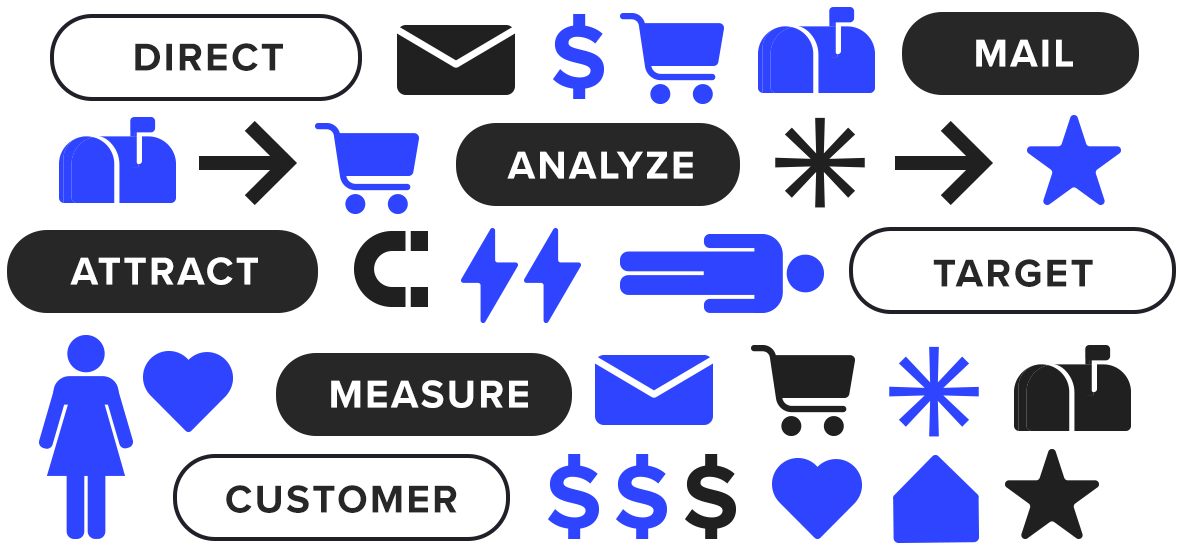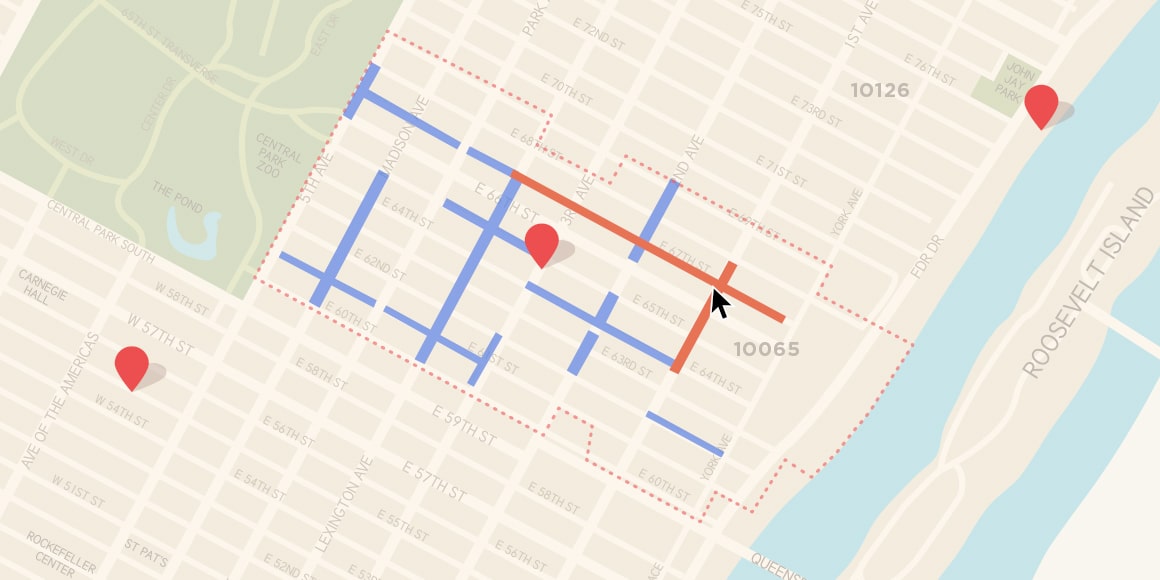Local businesses act as the lifeblood of communities—and as the nation begins to reopen in the wake of COVID-19, strengthening customer connections is more important than ever to ensure success into the future.
But many small businesses are still struggling to recoup pandemic-related losses—despite the fact that 34% of consumers in a recent survey said they’d pay more for local products.[1]
34% of America’s small businesses were still closed due to COVID-19 as of May 2021, compared to January 2020.
[2]
76% of small businesses are concerned about the virus’s impact on their business and for their business’s finances.
[3]
65% of businesses are concerned about having to close their business, or stay closed, if there is a second wave of COVID-19.
[4]
To bring customers back—and build loyalty—locally focused campaigns can go a long way, drawing attention to the unique aspects of your brand while encouraging customer engagement.
Strategic local business marketing can catch customers’ attention and set your brand apart—but first you need the right tactics in place. Discover some simple and affordable ways to get started with local campaigns below.
Community Involvement to Increase Awareness
To raise awareness of your brand among local customers, you must be more than a marketer—you must also be a member of the community. And today, “giving back” can be a true differentiator, as consumers increasingly look to do business with companies that support the causes they care about.[5]
Getting involved in your community shows that you’re taking a vested interest in improving the area, while showcasing your distinct brand values. This can help spread awareness organically—without having to make a big investment. Community involvement can also raise employee satisfaction—which can be just as important as customer satisfaction in the age of employee-review websites (not to mention traditional word of mouth).
Tactics and Best Practices for Community Involvement
There are many ways to start getting more involved. First consider your specific goals, needs and resources, as well as what will resonate most with your customers. (If you’re unsure, consider surveying them directly.)
Participating in local festivals, farmers markets, block parties and seasonal events can be a simple, fun way to become more immersed in your community. At these events you can sell goods or services and perhaps offer small branded, useful freebies—such as magnets—that help keep your company top of mind.
If you have sufficient financial resources, sponsorships of local events (like 5K fundraisers) or projects (like the construction of a new playground) may be an ideal option. These allow you to get your company name out there, associated with a good cause.
80% of consumers now feel more or as connected to their communities as they did before the crisis.
[6]
If you want to get more directly involved in volunteering and charitable work, start researching local volunteer opportunities. Even a couple of hours a week can make a big difference—helping those in need while organically raising awareness of your brand’s commitment to the community.
Finally, using locally sourced materials and ingredients—and making a conscious effort to enact sustainable practices in your business—can also increase awareness. If you run a cafe or restaurant, for instance, sourcing ingredients locally can signal to customers that you’re serious about supporting other local endeavors and investing in the community.
Sourcing from local vendors can also help you connect with other businesses in the area, which can lead to mutually beneficial relationships. You highlight their brand in your menu or catalog, for example, and they highlight your brand in their own company communications.
Get Inspired: 3 Ideas for Community Involvement
You can’t do it all, but if you have even a little bit of money, time or space to donate, you can start getting more involved in your community.
Donate Money
Donate a portion of sales to a local charity or nonprofit that aligns with your brand offerings and values. If you run a gourmet food shop, it may make sense to donate to a local food bank, for example. Get the word out by announcing the new initiative via digital channels, as well as direct mail. The tangible quality of mail may make it more effective than digital ads in leaving a lasting impression—helping to ensure your message resonates.
71% of U.S. consumers age 18–34 will pay more for a product if they know some of the proceeds go to charity.[7]
Donate Time
Find local charitable organizations in need of volunteers, and get all of your staff involved. Brainstorm together as a team to decide upon an initiative that everyone can get excited about, whether it be a beach cleanup day or delivering meals to homebound seniors. You can incentivize employees to donate some of their time by building paid volunteer days into their schedule or organizing group volunteer outings. This can be a great opportunity for team bonding, as well.
Donate Space
Use your storefront or another physical location as a drop-off area for local charitable donations, such as nonperishable food items, prom dresses or winter clothes for those in need. Or if you live in a region prone to heat waves and have enough room, consider offering some of your space as a community cooling center. Get creative and think about what your community needs most, then get the word out with simple, authentic messaging.
Personalized Marketing to Enhance Engagement
Personalized campaigns can help move customers from the awareness stage toward more active, meaningful engagement. Referring to focused, targeted marketing based on customer data, personalization can optimize your return on investment by presenting customers with tailored messaging that speaks directly to their wants and needs.
Personalization is a simple, affordable way to move customers closer to purchase while helping them feel special and understood.
Tactics and Best Practices for Personalized Marketing
When creating personalized campaigns, you’ll want to let the data lead the way. Analyze customers’ purchase history; interaction with your website, social channels and emails; response to both print and digital ads; in-person visits; and so on. Be sure to follow data collection and analysis best practices to ensure you make the most of the data.
All of this information will help guide you in creating tailored messaging and offers for your customers. You can also send out surveys, asking customers directly what they’d like to see more of, and what kind of personalization appeals to them (or not).
42% of consumers say it’s important for them to see personalized content.
[8]
Keep in mind that personalization requires thoughtfulness and care; in other words, bad personalization is worse than no personalization. Make sure your marketing is actually relevant to your customers, and avoid being overly “salesy.” Also keep privacy concerns in mind: Some consumers may find it off-putting to get emails about products they’ve browsed online. Both surveys and data analysis can help you uncover customer preferences.
Finally, be sure you’re keeping your customer personas up to date. Personas—representations of your ideal customers based on data and market research—can help you better understand your audience’s preferences, habits and needs.
Assessing demographic (age, ethnicity, education level, etc.), psychographic (personality, values, lifestyle, etc.) and behavioral (engagement with print ads, website, social, etc.) data can help you craft and refine your customer personas, which in turn will guide your messaging and campaigns.
Get Inspired: 3 Ideas for Personalized Marketing
More personal, tailored campaigns can help encourage meaningful customer engagement—but first you need to know where to start.
Create Content Maps
Once you’ve created or refined your customer personas, start content mapping—creating a well-defined plan to deliver the right content to the right people at the right time. By pairing specific content (whether new or existing) with each persona and each stage of the customer journey, you can stay organized while giving your customers the content they’re seeking. For optimal impact, be sure to focus on omnichannel, utilizing print formats, such as postcards, and digital, such as banner ads.
Deliver Data‑Driven Messages
How are customers interacting with your brand? If you notice an influx of customers in-store on certain days, send out email promos or sale reminders the day prior, enticing them to stop by and browse. Or if one customer segment is engaging heavily with social content that highlights a specific product or service, use retargeted direct mail to follow up with a mailpiece that highlights the unique benefits or features of the products they’ve been viewing.
Offer Personalized Recommendations
Create a simple online and/or in-store survey or “quiz” that customers can take to see which products or services best fit their needs, wants or personality. This can be a simple, fun way to encourage interaction while making customers feel like they’re getting special attention and service. Consider asking for customers’ contact information before they complete the survey, so you can follow up with relevant marketing.
81% of consumers are willing to provide their personal information to get a personalized experience.[9]
A Standout Customer Experience to Encourage Conversion
By making customer experience (CX) a priority and focusing on ways to deliver meaningful, memorable campaigns, you can help move your audience from “I’m considering” to “I’m buying.”
To create a CX that really stands out, it’s crucial to focus on an omnichannel approach, incorporating both print and digital channels. By thinking holistically, you can start creating well-connected campaigns that show customers why your company is special.
Tactics and Best Practices for a Standout Customer Experience
Well-integrated marketing can play a major role in driving customers toward a transaction—but first, you must ensure that your company is prepared.
Conducting a tech audit is a good place to start; without solid tech infrastructure in place, it will be difficult to provide the best possible customer experience. Ensure that your customer relationship management (CRM) system is functioning as it should be and is integrated with your other systems. If you have the resources, a CRM value assessment tool can provide a holistic assessment of your system and identify areas for improvement.
Next, be sure to revisit the data, assessing which kind of messaging or offers have proven most successful in pushing customers toward a purchase, and which haven’t performed as expected. Make sure your databases are communicating with each other so you can get a full picture of what’s working.
And whenever possible, try to get feedback directly from customers, perhaps surveying them on what’s most important to them, whether it be personalized messaging or in-store sales.
Finally, even as COVID-19 restrictions continue to loosen in the U.S., keep in mind that some customers may still have concerns. It’s important to make these customers feel valued and safe. If you’re advertising in-store events or sales, for example, you may also want to include some fine print that outlines the precautions you’re taking or the extra sanitizing and social distancing measures you have in place.
Get Inspired: 3 Ideas for a Standout Customer Experience
To meet customers where they are and encourage action, it’s important to think strategically, putting yourself in the customer’s shoes; digital innovations and loyalty programs can help you deliver what your audience really wants.
Tap into the Power of Informed Visibility®
Start leveraging the Informed Visibility feature to track your mailpieces through each step of the delivery journey, so you can see when customers have received them. From there, you can follow up with complementary digital marketing, whether in the form of a promo code, a simple reinforcement of the message on the mailpiece, or something else. This allows for coordinated, well-connected omnichannel experiences that encourage your customers to act.
Introduce Every Door Direct Mail® Campaigns
Use Every Door Direct Mail (EDDM®) marketing to send exciting announcements and enticing promos to local customers, helping to spur them to action. EDDM lets you target customers in specific ZIP Codes™, making it easy to connect with people who live near your store or physical location. You can even refine your target audience further, zeroing in on customers of certain demographics within your set geographic areas.
31% of consumers are more excited to receive their mail each day than they were before COVID-19.[10]
Reward Loyalty 
Set up a loyalty program to incentivize customer action, setting up different tiers with different perks (e.g., at level 1, customers get a birthday freebie; at level 2, free standard shipping; at level 3, access to special promos and events; and so on). Customers could earn loyalty points after spending a certain amount, but also for signing up for your newsletter or following your social channels. These programs can be very effective in helping customers feel valued and driving them to transaction—without coming off as overly promotional or pushy.
Key Takeaway
COVID-19 forced brands across the nation to adapt quickly in order to survive. Small and locally owned businesses, in particular, bore the brunt of the crisis, with nearly seven in 10 small businesses reporting negative effects.[11]
To help draw in the customers your company needs, you don’t need to invest tons of time or money, and you don’t need to be a marketing expert to get started. Instead, put your efforts into locally focused campaigns—incorporating community involvement, personalization and well-integrated omnichannel tactics—at each stage of the purchasing journey.
Direct mail services and innovations like the Informed Visibility feature, retargeted direct mail and Every Door Direct Mail campaigns, in particular, can help set your brand apart, allowing you to engage the specific customers you want to target.
By zeroing in on these simple, affordable strategies that put your customers and your community front and center, you can help keep your brand top of mind—and inspire your customers to act.

 search
close
menu
search
close
menu












